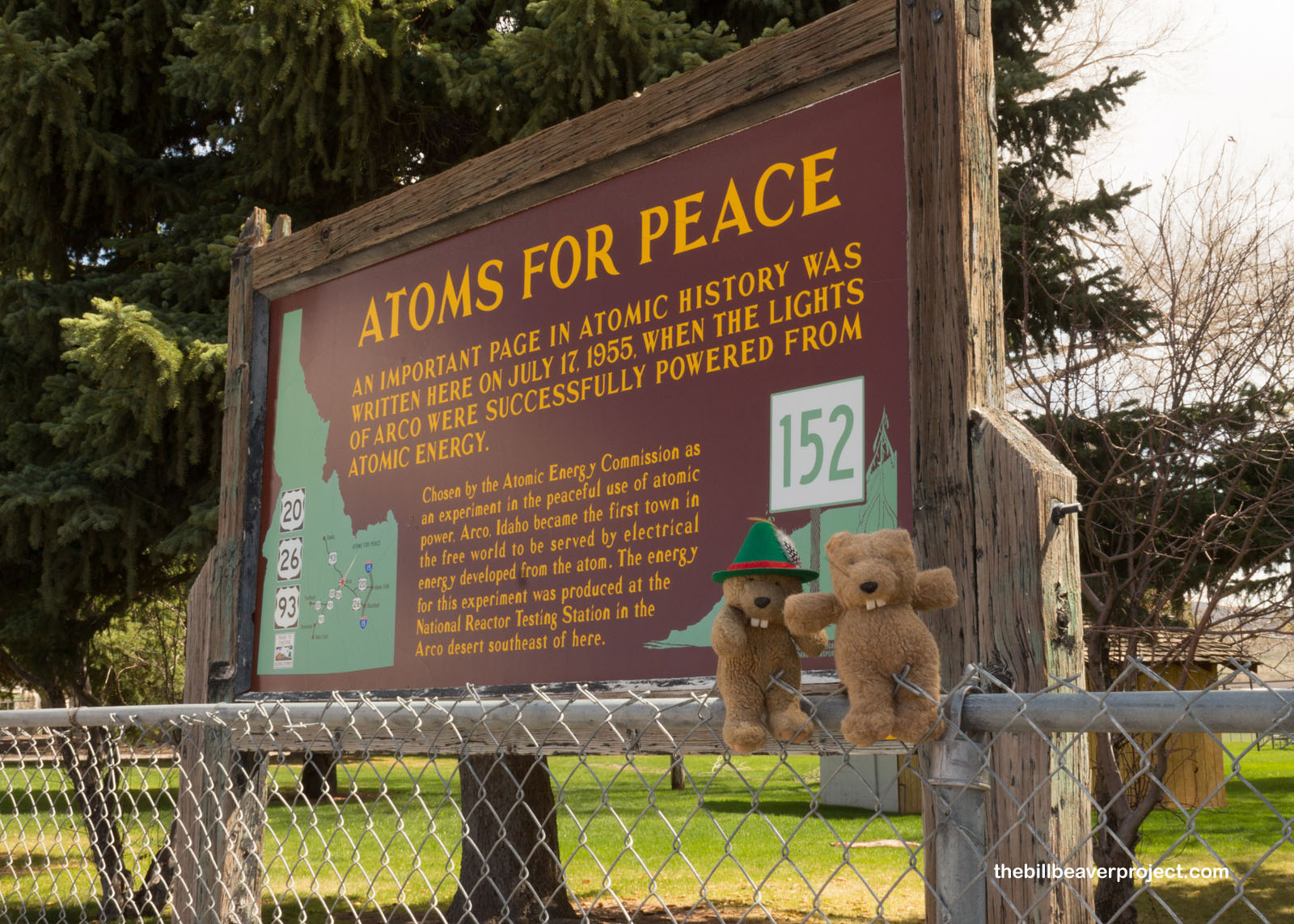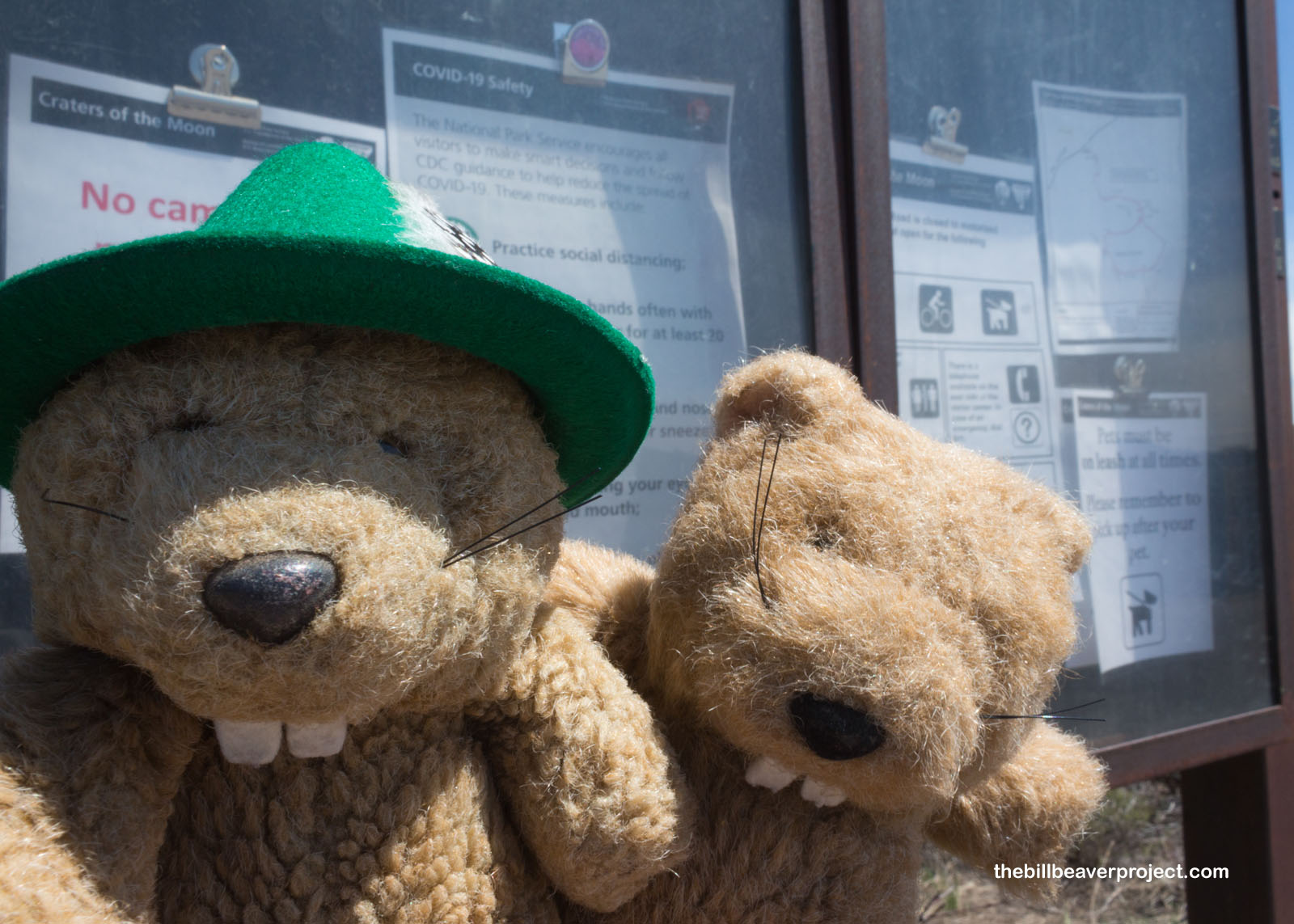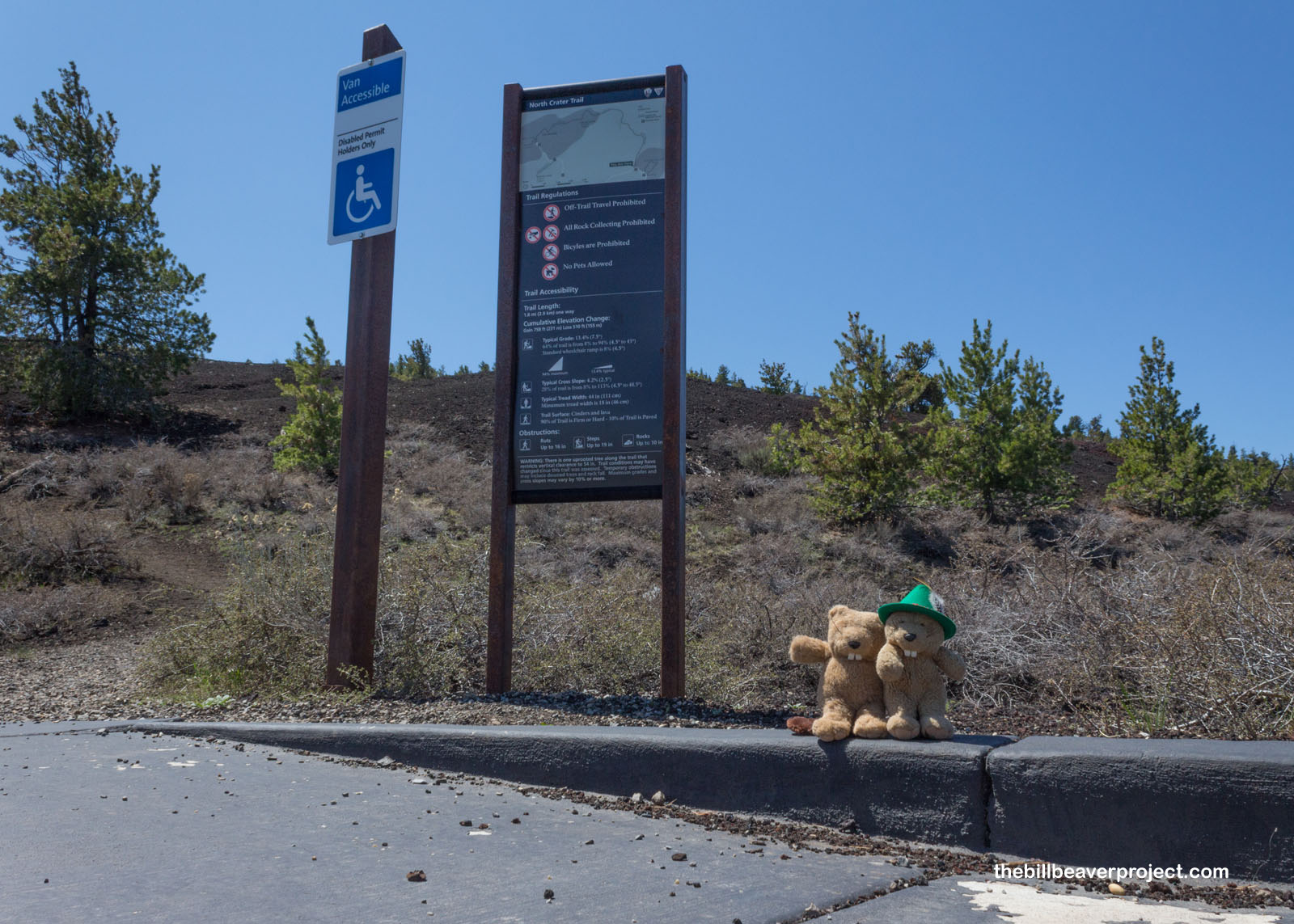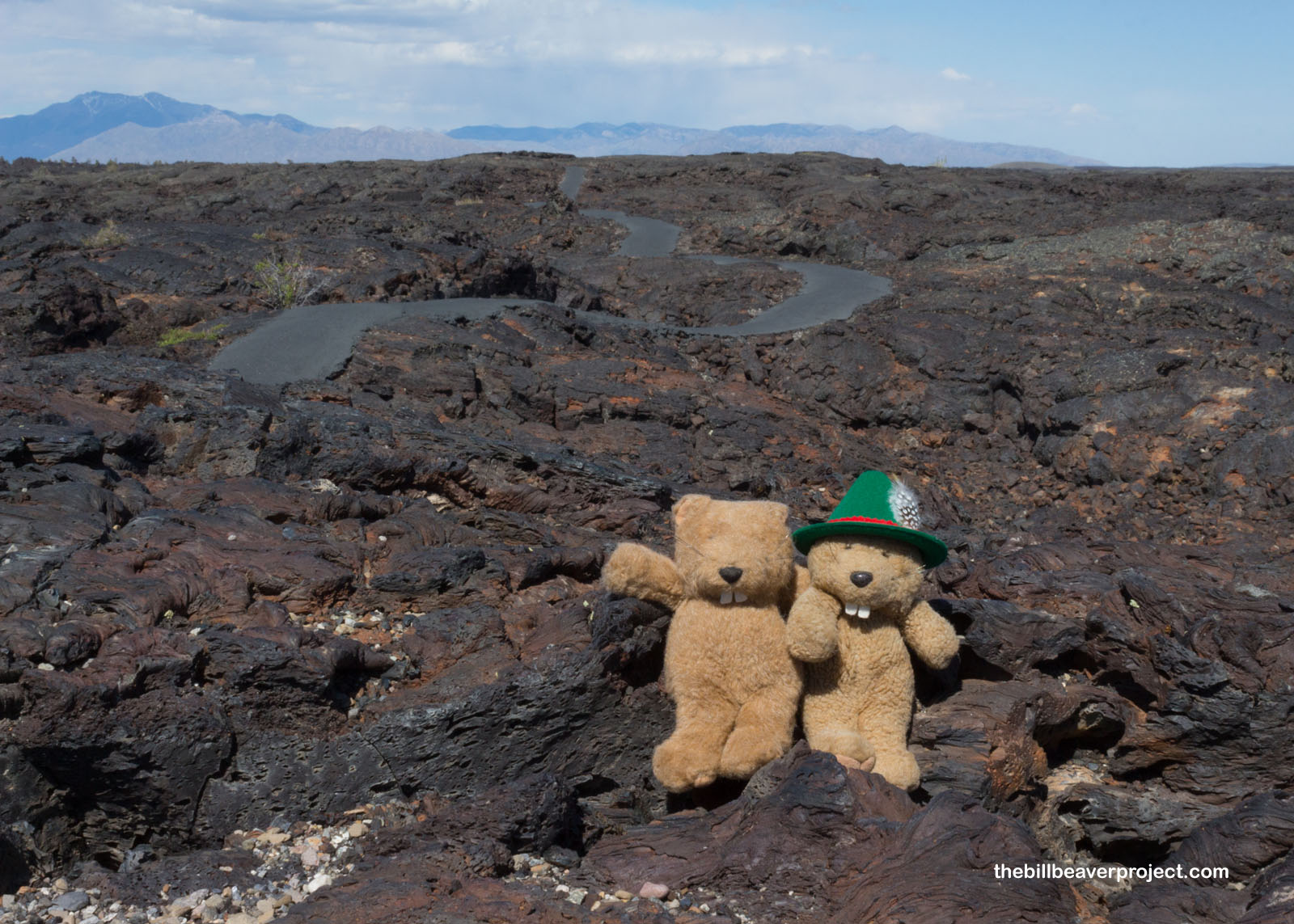 Previous Day |
Salt Lake City, UT → Arco, ID → Salt Lake City, UT 552.0 mi (888.4 km) |
 Next Day |
We’re landing on the moon, everyone!
The last few weeks (almost months) have felt like living on another world! I’ve been itching to continue my national park quest, but to do so, I’ll have to make some sacrifices, like passport stamps, because all of the visitor centers are still closed!
Anyway, I talked Flatty into joining me on a day trip up to Craters of the Moon National Monument, which still lets folks hike their Loop Road! We were on our way north bright and early, but first, we made a quick stop in Pocatello, “Smile Capital” USA!
 |
Pocatello got its nickname in 1948 when Mayor George Phillips passed a tongue-in-cheek law after a super rough winter, making it illegal not to smile! I wanted to stop here and see a neat building on the National Register. It’s called the A.F.R. Building after Albert F. Roulet, who built a saloon here in the late 1880s. Today, it’s one of Pocatello’s last surviving commercial buildings from the late 19th Century!
 |
When I was done nerding out, Flatty and I continued our journey north, through the city of Arco, taking note of an important historical marker. Arco, Idaho was the first city in America to be powered by atomic energy and marked a real shift toward peacetime use of nuclear power!
 |
Beyond Arco, where gas was selling for an incredibly low $1.69 per gallon, the wind really started to kick up. Now, as you may recall, wind is terrible for taking photos! Flatty and I had to hold on to each other just to stay standing! That meant our adventure in Craters of the Moon National Monument was going to be a real challenge!
 |
We arrived at the closed visitor center and took note of the many COVID-19 advisories. Remember last week when I reported 19,107 cases back in LA? Well today, there are 25,677! Utah jumped from 3,948 last week to 5,175 today, and as for Idaho, well, there are only 1,908 in the whole Gem State. That makes today’s adventure perfect for social distancing!
 |
With the Loop Road closed to vehicles, we were free to wander in the middle of the road without any fear of becoming roadkill! There were still enough folks nearby that it didn’t feel apocalyptic, but compared to a normal summer, this was one quiet monument!
 |
 |
Our first stop as we pulled up, on foot, into an empty parking lot, was the North Crater Trail, which was going to take us about two miles around an ancient cinder cone and all its geologic wonders!
 |
As we hiked upward, below we looked out on the remains of a huge flow! Craters of the Moon is a giant volcanic landscape that erupted in eight periods between 15,000 and 2,000 years ago! The source of all this black stone was a 65-mile long rift in the earth called, fittingly, the Great Rift! This is the largest, deepest, and most recently active volcanic rift system in the USA, and one of only two in the world!
 |
Our first stage on the trail was the North Crater Flow Vent, which is where this ancient volcano’s eruption blew away its entire wall! The lava from additional eruptions gradually wore away the rest of the cone, making this more of a half crater today.
 |
The lava flows have made some really neat formations! These smooth textured flows are basaltic, which means that they don’t have a lot of silica and could flow more. The flows also created neat lava tube caves, but we didn’t have our caving equipment to explore them.
 |
 |
Boy, did the wind ever start whipping as we climbed out of the North Crater, but as we tucked ourselves into the rocks, we sure got a great view of the ancient lava flow!
 |
From here, the trail continued under a fallen tree and around the ancient ash falls of three Big Craters that had kept their walls. We took a water break, because it’s important to stay hydrated, before continuing up to the biggest crater!
 |
 |
As we gazed down into this massive crater, it was amazing to think about how the volcanic activity of ancient times is still affecting life today! Only a few trees and small plants can still survive here in the ash, and believe it or not, the Great Rift isn’t done yet! It’s still active and could erupt again, probably nothing explosive, but enough to erase all the plants that have managed to creep back onto these hills!
 |
At the end of the North Crater Trail, we found a collection of rare spatter cones! These miniature volcanoes have had a rough go over the years! They were heavily worn down by visitors before this became a protected area, and it took trail restrictions and restoration to bring them back to roughly how they looked when they were first discovered. They’re really amazing to see in their stark environment today!
 |
With the wind still whipping, Flatty and I continued along the Loop Road, still totally empty. We couldn’t tell just how far we had to go before completing the loop, but the day was bright enough that we didn’t worry about it too much.
 |
We stopped to admire the aʻā fields! Aʻā is a type of lava rock that’s rough enough to make you go “Ah! Ah!” when you step on it. This type of lava flows quickly and cools quickly, breaking into small, rough pieces. Beyond its rough edges, we could see the Big Southern Butte, one of the largest volcanic domes on Earth!
 |
We veered off on the Caves Trail, technically still closed for winter, but still flowing with the other kind of lava rock: pāhoehoe! Like aʻā, pāhoehoe is a Hawaiian term, only this one’s much less painful. This lava flowed and cooled slowly, so it’s nice and smooth on the toes. It’s also responsible for the neat lava tubes found here and in Lava Beds National Monument!
 |
 |
All the lava tube caves were closed today, though. Partly, it was because the entrances were still blocked by snow and ice, but mostly it was because, with the visitor center closed, there was no one to disinfect visitors who might be carrying White Nose Syndrome. Coronavirus isn’t the only pandemic to worry about these days!
 |
Flatty and I finished our adventure with a stroll around the Devil’s Orchard. That Devil sure is prolific with his Postpile, Corkscrew, and toilet paper, to name a few. The Devil’s Orchard gets its name from the giant volcanic boulders that blew off of the North Crater when it erupted and now stand among dead snags in a garden of ashes!
 |
Whew! By the end of our trek, our energy had nearly erupted right out of us! I had fun exploring Craters of the Moon, even if it wasn’t fully open again. It’s a rare time in our lives for this to happen, and almost as rare for me to adventure with my brother. I’ll be heading back to California next week, so I hope to see him again soon.
Moonwalking back!

 Previous Day |
Total Ground Covered: 1,427.2 mi (2,296.9 km) |
 Next Day |
